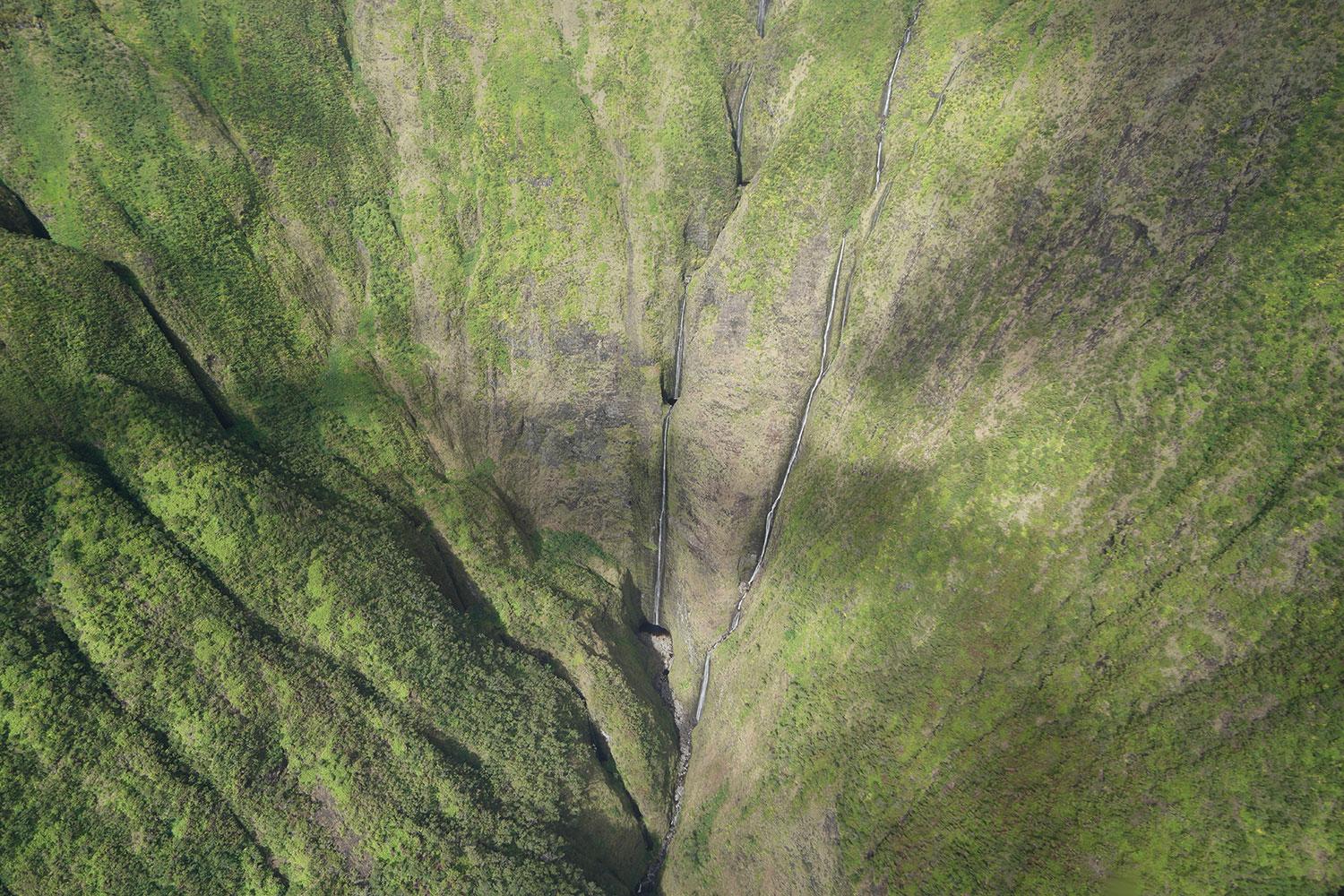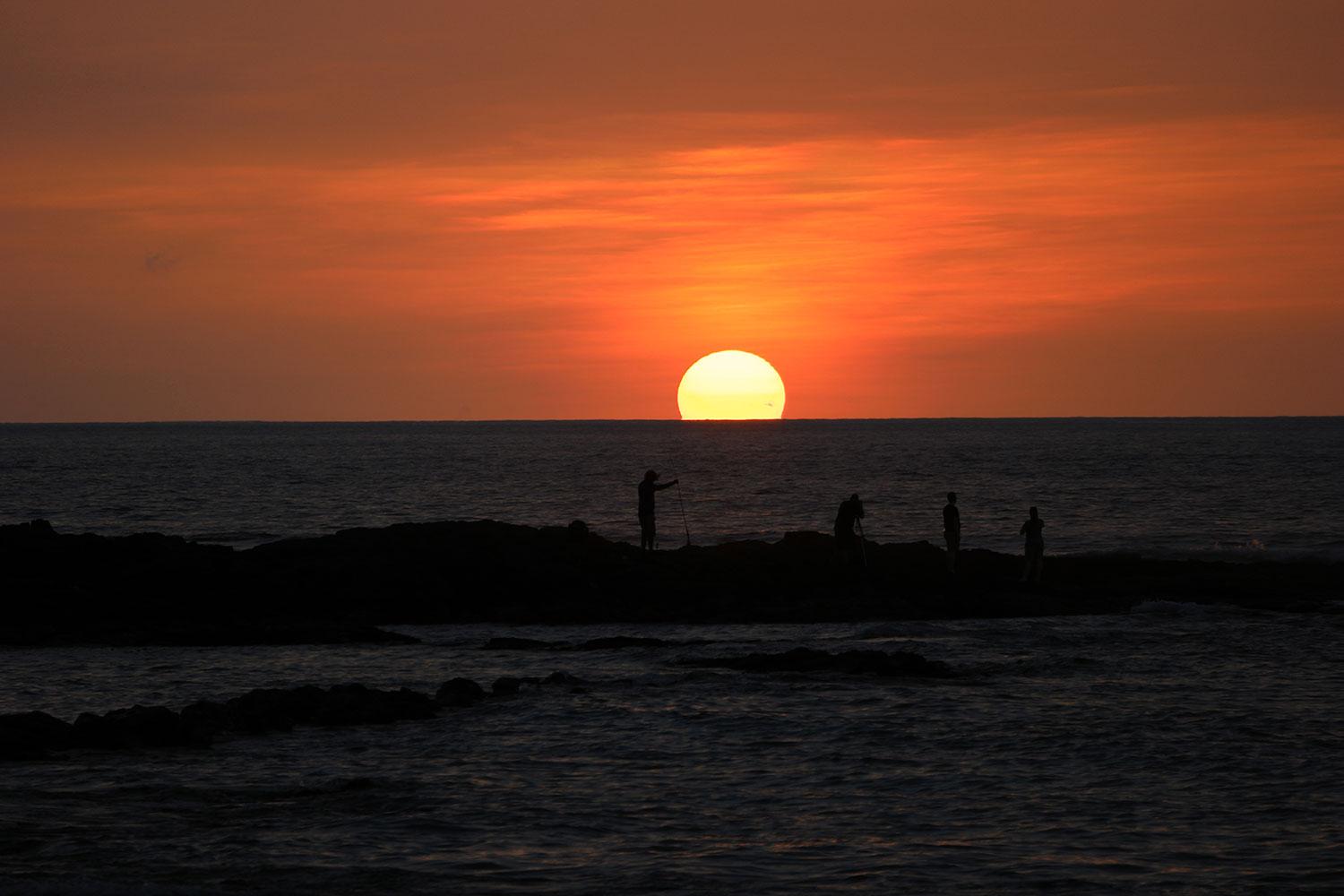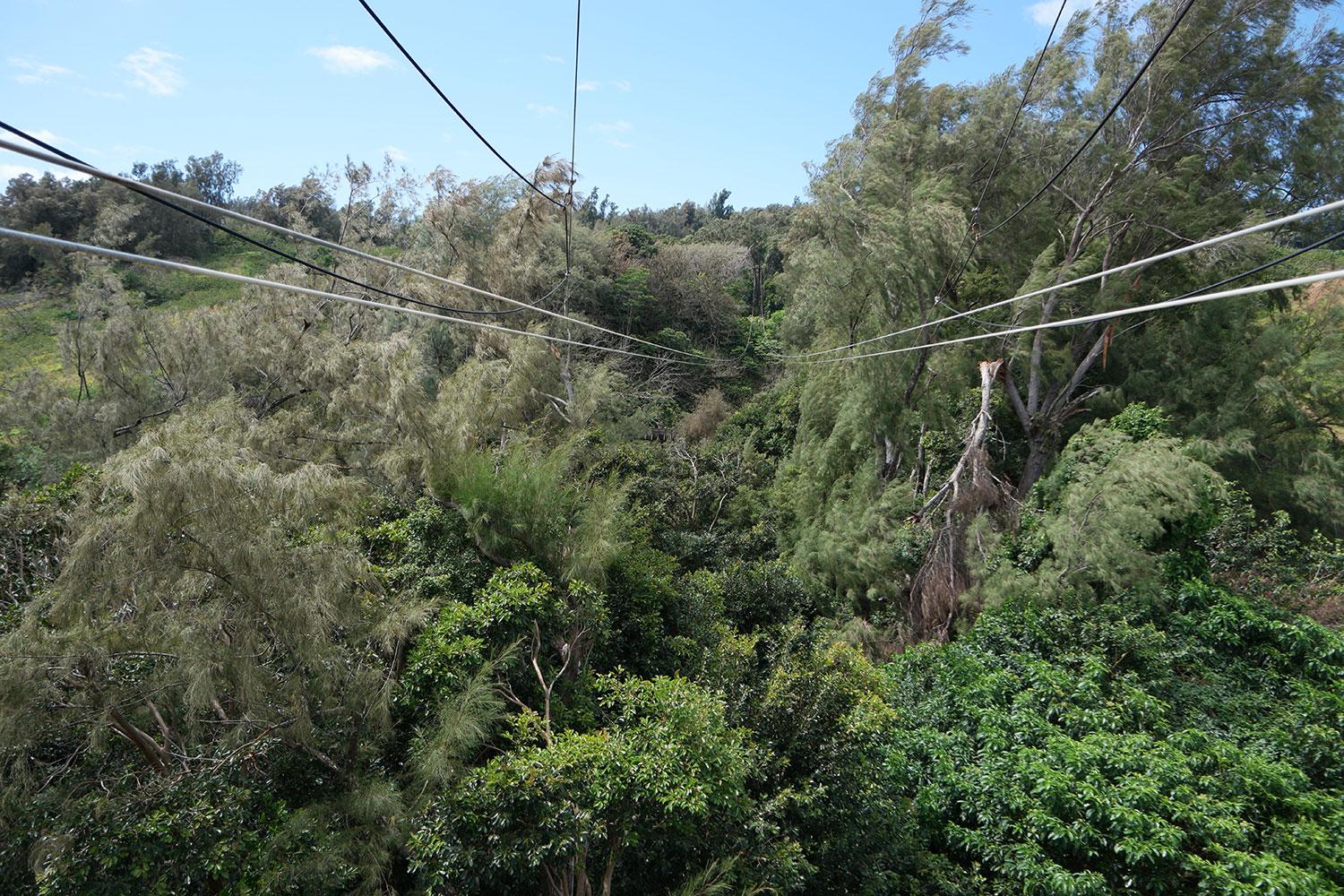“The NX500 challenges Sony’s A6000 for the compact mirrorless camera crown. Both are exceptional, but the NX500 ups the ante with 4K video.”
- 28.2MP BSI APS-C sensor
- 4K videos
- Terrific image quality
- Speedy autofocus system
- No viewfinder
- Flash isn’t built-in
- Some 4K-recording limitations
It didn’t take long for Samsung to cash in on the popularity of its NX1, one of our favorites of 2014. The company kept the highly regarded imaging components and packed them into a much smaller package, the NX500 ($800), for nearly half the price. In comparison, there are some sacrifices made to achieve the lower price, but Samsung managed its best to maintain the image quality and high performance, which is a feat.
The NX500 is the successor to the NX300, a camera we loved back in 2013. But the NX300 had a gimmick: it could shoot 3D images and videos. It was designed to help push content onto 3D televisions, which were heavily touted as the next big thing (to borrow from Samsung parlance), but failed to gain traction with consumers.
Fast forward to 2015, and Samsung is promoting another video feature: 4K. But this time around, 4K has a brighter future than 3D ever did. Whether for travel or a replacement for an old entry-level DSLR, the NX500 is a great camera for both stills and videos. Just don’t expect the NX500 to have the NX1’s video prowess.
What’s in the box
Our kit comes with the f/3.5-5.6 16-50mm Power Zoom with built-in optical image stabilization (OIS). Also in the box is the AC adapter, USB cable, strap, and Quick Start guide. You should download the full manual (218 pages) as well the suggested software: iLauncher, Power Media Player, Samsung Movie Converter, and RAW/DNG Converters.
Features and design
The NX500 may share the same guts as the NX1, but it’s obvious they aren’t entirely the same camera, nor are they designed for the same buyer. The NX1 looks and feels like an enthusiast DSLR, because that’s the market it’s targeted toward, particularly videographers. The NX500, however, is the epitome of a compact system camera (CSC): It is much lighter and smaller, with far fewer buttons and dials (construction is solid, but it doesn’t come close to the NX1’s). It looks like many other mirrorless competitors, such as the 24MP Sony A6000 (also $800). The buyer here is the step-up user who wants an easy-to-use camera, but with the power of an interchangeable lens model.
The design is fairly standard; in fact, it hasn’t dramatically changed from the NX300. It comes in black, brown, and white. It measures 4.7 x 2.5 x 1.7 inches, and weighs 10.1 ounces with the battery (body only). The camera uses Samsung’s NX-mount, and the kit lens is the solid 16-50mm Power Zoom with i-Function capability. The lens is fine for everyday use, but there are other Samsung and third-party glass options to choose from, including primes and zooms.
Besides the lens mount, the front has an AF Assist lamp to help focus in dim light and an enhanced grip. Because the camera isn’t very tall, this writer didn’t find the grip comfortable to use, but another DT writer thought it was fine. This demonstrates why you should do a hands-on test before you buy. Otherwise, the camera’s design is plain, which goes for nearly all NX cameras.
The top-deck has stereo mics, a pinhole speaker, and hot shoe. Two big differences between the NX1 and the NX500 are the lack of a built-in flash and electronic viewfinder (EVF). Given the $700 difference and target audience, this is to be expected. Samsung does supply an accessory flash that attaches via the hot shoe, so that base is covered; the EVF is not and it’s a key difference with the Sony A6000, which offers both amenities. However, we didn’t miss the EVF since the rear display is outstanding, but there were a few instances where it would have come handy (more on this later).
Samsung kept the highly regarded imaging components of its NX1 and packed them into a much smaller package.
Also on the top-deck is a Mobile button to connect with a smartphone for sharing purposes, a jog wheel to move through menus and enlarge shots during playback, and a Mode dial. Nearby are the on/off lever, shutter button, and auto exposure lock.
The back is dominated by a 3-inch, 180-degree tilting Super AMOLED touchscreen (rated 1,036K dots). Color accuracy is great, although we definitely had some reflectivity issues, making the camera hard to use on a lake or under bright sunshine during a whale-watching excursion off the Hawaiian coast. As alluded, not having an EVF in these situations is a drawback.
Here’s another head scratcher: The LCD flips up, and the camera automatically enters selfie mode, but you can only do this with the flash removed – otherwise, it blocks the screen. This bothered us as we like having the flash available for fill-flash duty, and it’s annoying to take the flash on and off. We will say selfies are fun to take with this camera, since the touchscreen makes it quick and simple.
To the right of the touchscreen are the usual camera buttons, including exposure compensation, menu, function, playback, and delete. A center OK button is surrounded by display, AF, ISO, and burst mode buttons that give access to major parameters. On the right edge is a red-dot video button; it’s slightly hidden and we’d prefer it to be on the top-deck for easy access.
With the touchscreen, i-Function lens (pressing the button brings up an onscreen menu), and physical buttons, there are three ways to change settings. We like i-Function because it gives you access to often-used parameters quickly.
Overall, this very plain-looking camera is actually fairly sophisticated underneath, making it a good choice of interchangeable lens newbies and more-sophisticated shutterbugs.
The left side has a small compartment for USB 2.0 and HDMI connections (the NX1 has USB 3.0 for speedier transfers – another example of pricing compromise). On the bottom are battery (rated at 370 shots – a bit more than other mirrorless models) and SD card slots, as well as the NFC tag.
Specs, performance, and use
We put the NX500 kit through its paces over several weeks of long-term testing, in a variety of locales, shooting stills and videos. Although the Power Zoom is decent with a 35mm range of 24-75mm, we definitely missed a lot on the telephoto end. There were several instances where we wish we had the longer zoom, such as distant jet-skiers or humpback whales. We also used a 50-200mm lens for a day, and while we had the telephoto, we were missing the up-close wide-angle. We suggest budgeting for the 18-200mm lens ($799), which is going to you a much wider range without having to swap lenses; keep the Power Zoom for everyday shots.
One of the camera’s big claims to fame is its 28.2MP backside-illuminated (BSI) APS-C sensor. It’s the biggest BSI sensor available, producing an image of up to 6,480 x 4,320 pixels. The sensor works together with the DRIMe Vs processor (both sensor and processor are the same ones used in the NX1, but the NX500’s DRIMe Vs is technically a variation of the NX1’s DRIMe V).
The beefier NX1 offers more processing power and is a lot quicker in burst mode. The NX1 grabs 15 frames per second (fps) but the NX500 does “only” nine. This is hardly slow but it’s one of the tradeoffs. Even so, the NX500 stands up well to its same-priced competition and tops them with higher-quality movies and the most pixels for any APS-C mirrorless camera.
Photo quality is excellent, with very accurate colors.
We were invited by Samsung to try out the camera in Hawaii. Running around from activity to activity, we found that the NX500 – and CSCs in general – makes a great travel camera. We could easily fit the camera into a coat pocket or backpack. We can’t imagine lugging around the NX1 or a DSLR while traveling. It’s not a knock against those cameras, but CSCs do have their advantages. We love that Samsung put as much power as it could into a smaller body, so it never left us truly unsatisfied, with the exception of the short lens. The Hawaiian landscape presented us with a variety of colors, lighting, and activities to shoot, and we found the NX500 to be capable in nearly all situations.
On paper, specs are one thing, but how does it translate into actual quality? No shocker here: they were excellent, with very accurate colors and a nice depth, even when blown up to full size on a large display. We even caught some beautiful sunsets that are postcard worthy. Considering its audience, the NX500 comes with several scene modes and special effects. One to try out is a waterfall mode that captures streaming water beautifully, but it requires a tripod.
The NX500 has a very speedy hybrid autofocus (NX AF System III) that uses a combination of phase detect and contrast detect systems. Like the NX1, it’s top notch and we had no issues grabbing focus. We primarily used single AF but there are continuous, active, and manual options. The optical image stabilization also worked well. We like being able to tap-to-focus on the touchscreen, and the ability to adjust exposure based on where we tap. Overall, navigating through menus is easy and straightforward.
We were impressed with the NX1’s ISO performance, and the lower-priced sibling’s is no exception. The native ISO range is 100-25,600. Images are solid to ISO 3,200 with a slight falloff as you ramp up to the max of 25,600. Softness and lack of detail enter the picture at 12,800 but files are still useable at small sizes.
One of the NX500’s highlights – if not the highlight – is movie capture. Like the NX1, you can shoot both Cinema 4K and 4K Ultra High Definition (UHD, that standard for 4K TVs), putting the NX500 ahead of the competition; 4K resolution is 4,096 x 2,160 at 24 fps, while UHD is 3,480 x 2,160 at 30 fps. In comparison, the Sony A6000 tops out at Full HD 1080/60p, which the NX500 can shoot as well. Note, however, that the NX500 doesn’t use the entire sensor during 4K recording; video is actually cropped in a bit. Maybe consumers won’t notice, but the video pros should take note. Another thing we noticed: there’s no video mode, but the delete (trash) button also functions as a video standby mode, which lets you properly frame your shot (we wouldn’t have known this if a Samsung engineer hadn’t told us).
Now, the ability to shoot 4K sounds cool – and it is – but it’s still a niche, albeit one that’s growing steadily. Few of us are actually able to process or view 4K content. Also, Samsung is using a new compression codec, H.265 HEVC. While it’s the broadcasting standard, there are few applications that recognize it (the benefit is that you can record 4K onto regular SD cards). Samsung’s conversion software only works with Windows; Mac users can utilize Handbrake. Other things that separate the NX500 from the NX1 include the lack of a microphone port or headphone jack, 4K videos are limited to 15 minutes (versus 29 on the NX1), and the HDMI port supports Full HD-output only (a bummer if you actually own a 4K TV).
The NX500 is more of a casual camera that happens to shoot short 4K video clips, whereas the NX1 is really geared toward videography enthusiasts and pros. Consider the NX500’s 4K capability as a future-proofing feature. You can shoot clips in 4K and save them for later, while converting them to Full HD for use today. You can also shoot in 4K and grab 8-megapixel stills out of the footage, which is nice for those who don’t want to ever miss the moment.
Overall, video quality, like photos, is excellent. The colors look great, with some very nice details. We did most of our shooting in Full HD, as that’s what’s easiest to work with and what we think most users will use most of the time. Despite the issues, the NX500 is a great compact movie camera for consumers.
The DT Accessory Pack
Up your game and get the most out of your gear with the following extras, hand-picked by our editors:
Samsung 18-200mm Multi-Purpose Lens ($800)Although the kit lens is a good starting point, you’ll be happier with this zoom.
SanDisk Extreme Pro SDXC UHS-1 Card (110)While Samsung uses a compression format to create smaller 4K files, you should use the fastest and largest capacity card you can find if you plan to shoot a mix of video and photo.
Booq Python Mirrorless ($80)This bag from Booq is designed for CSCs like the NX500, yet there’s enough room for accessories and your smartphone.
Linking the NX500 to a Samsung Galaxy S5 and an iPhone 5S smartphone is easy, but was very fast using NFC with the S5. Besides Wi-Fi, the NX500 has Bluetooth for remote shutter, but many of the features work best with select Android devices. Still, the iOS and Android apps handle the basics such as swapping images between devices or using the phone as a remote control.Warranty
Samsung offers a one-year limited warranty for parts and labor.
Conclusion
The $800 NX500 kit has loads of positives, including great stills and extensive video options. Our only real knock is the lack of an electronic viewfinder since the rear display screen has some definite reflectivity issues. There are also limitations to 4K video recording, but this may not be an issue to most users. Whereas 4K is a real star in the NX1, here, it’s the supporting act.
Highs
- 28.2MP BSI APS-C sensor
- 4K videos
- Terrific image quality
- Speedy autofocus system
Lows
- No viewfinder
- Flash isn’t built-in
- Some 4K-recording limitations
Les Shu contributed to this review.

















